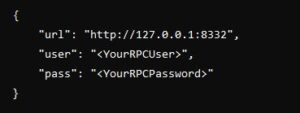Situatie
What is a Bitcoin Mining Node and why set it up on Linux?
A Bitcoin mining node is a server that participates in the mining process by verifying and adding new transactions to the blockchain. Unlike a regular Bitcoin full node, a mining node also solves cryptographic puzzles to compete for block rewards. Setting up a mining node on Linux allows you to contribute to Bitcoin’s security while potentially earning Bitcoin rewards.
Running a mining node on Linux is ideal for advanced users who want to explore Bitcoin mining or participate in a pool. While solo mining is resource-intensive, joining a mining pool can make mining more accessible by pooling computational power with others. This setup provides deeper engagement with Bitcoin’s consensus mechanism and supports its decentralized infrastructure.
Solutie
Step 1: Install Bitcoin Core
To set up a mining node, start by installing and syncing Bitcoin Core. If you haven’t installed it yet, follow the guide to install Bitcoin Core on Linux. A fully synchronized node is essential for mining, as it ensures access to the latest blockchain data.
Step 2: Install Mining Software
Select a mining software compatible with your hardware. For this guide, we’ll use BFGMiner, a popular mining application. Install it using the following commands:
Step 3: Configure Your Mining Software
If you are mining solo, configure BFGMiner to connect directly to your Bitcoin Core node. Create a configuration file:
nano ~/.bfgminer.conf
Add the following content, replacing placeholders with your Bitcoin Core RPC credentials:
Save and close the file. If you are joining a mining pool, replace the URL with your pool’s server address and provide your pool account credentials.
Step 4: Start Mining
Run BFGMiner to start mining:
bfgminer -c ~/.bfgminer.conf
You will see statistics such as your mining speed and shares contributed. If you’re mining in a pool, your earnings will depend on your share of the pool’s computational power.
Step 5: Monitor and Optimize
Mining requires significant computational resources and generates heat. Monitor your server’s temperature and resource usage to avoid hardware damage. You can use tools like htop and lm-sensors for monitoring:



Leave A Comment?